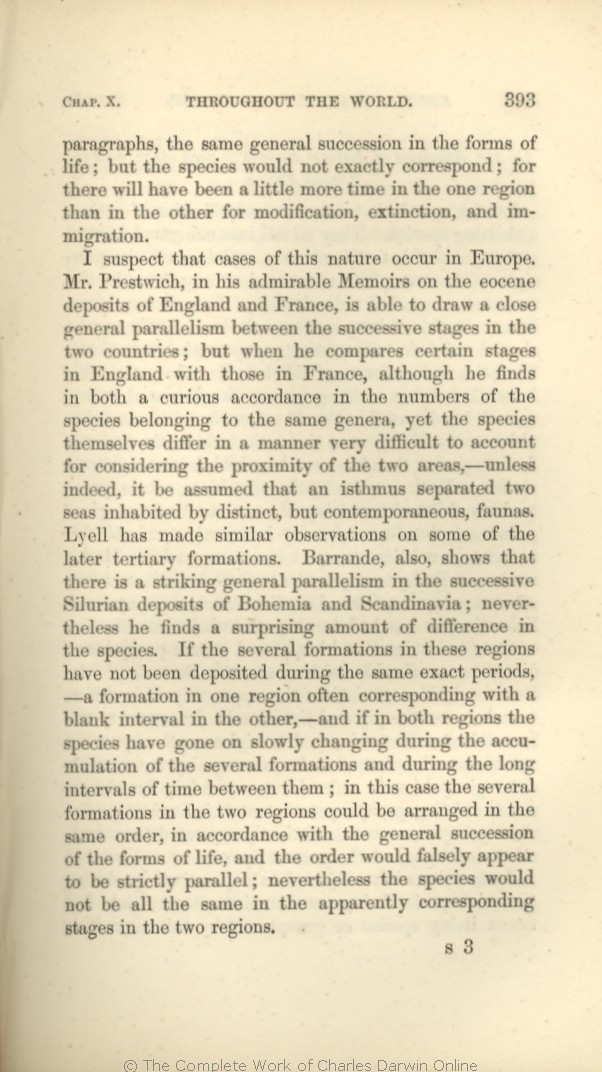|
paragraphs, the same general succession in the forms of life; but the species would not exactly correspond; for there will have been a little more time in the one region than in the other for modification, extinction, and immigration. |
|
I suspect that cases of this nature
occur | occur 1860 1861 1866 1869 1872 | | have occurred 1859 |
| for 1866 1869 1872 | | for, 1859 1860 1861 |
| unless 1866 1869 | | unless, 1859 1860 1861 1872 |
| case 1866 1869 1872 | | case, 1859 1860 1861 |
| forms 1861 1866 1869 1872 | | form 1859 1860 |
| be all 1861 1866 1869 1872 | | all be 1859 1860 |
|









